Audi launches the Q4 e-tron with three drive variants
Audi has unveiled its first two MEB models, the Q4 e-tron and Q4 Sportback e-tron. According to Audi boss Markus Duesmann, the e-SUV and e-SUV coupé will mark “the entry into the electric world at Audi”.
++ This article has been updated. Kindly continue reading below. ++
Duesmann emphasized the car’s importance in the VW subsidiary’s electrification strategy at the MEB electric car’s premiere event. After the “pioneer” e-tron quattro and the “brand shaper” e-tron GT, the Q4 as an e-SUV and e-SUV Coupé is to become the “accessible” among the electric Audis – at least, that’s the marketing theory.
The German carmaker has now revealed some technical data after all kinds of design tidbits in the past months, like the near-series design (but not the series design) of the Sportback or interior. Since the Q4 is based on the MEB and is also manufactured in Volkswagen’s MEB plant in Zwickau, many details have already been revealed. However, in the compilation of possible MEB components, Audi deviates a little from the policy generally followed by VW and Skoda for their MEB models.
Audi will offer the Q4 e-tron and Sportback in three variants. The entry-level model called Q4 35 e-tron relies on the MEB’s 52-kWh battery (net), familiar from the VW ID.4, for instance. Audi uses the 125 kW version of the rear engine, whereby the ID.4 is alternatively available with 109 kW.
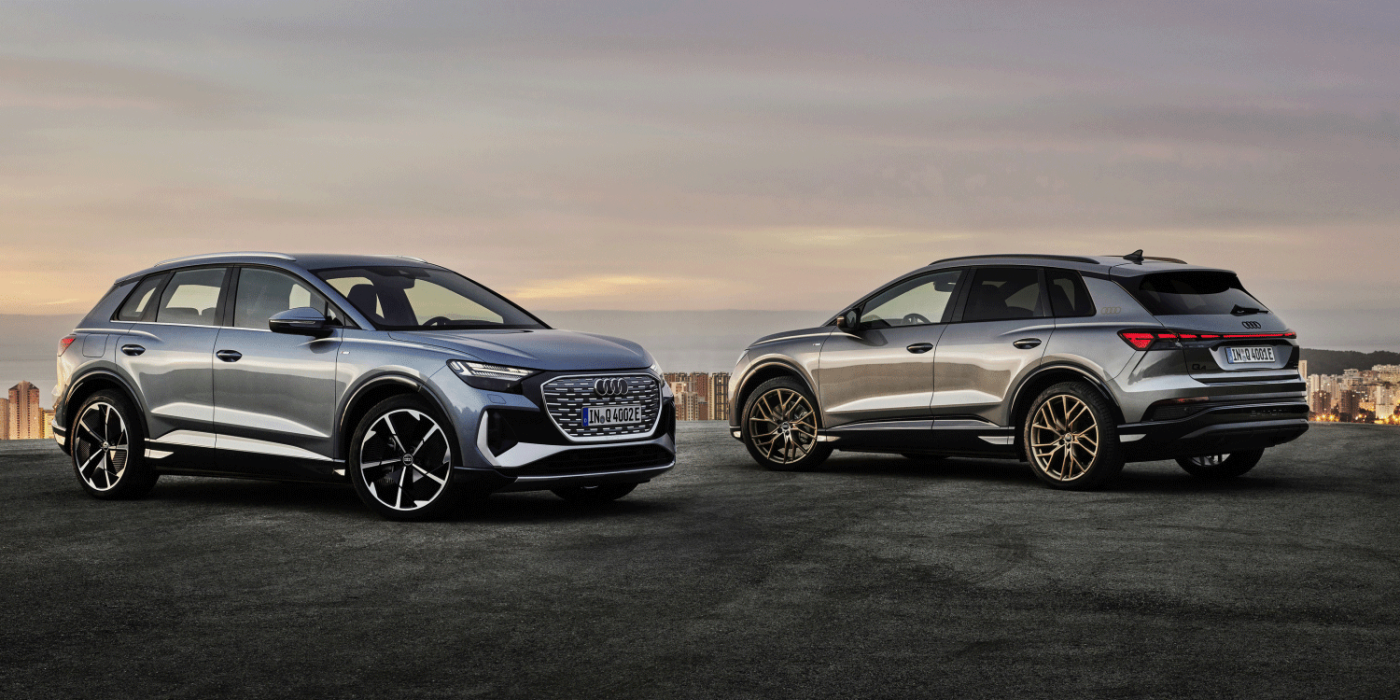
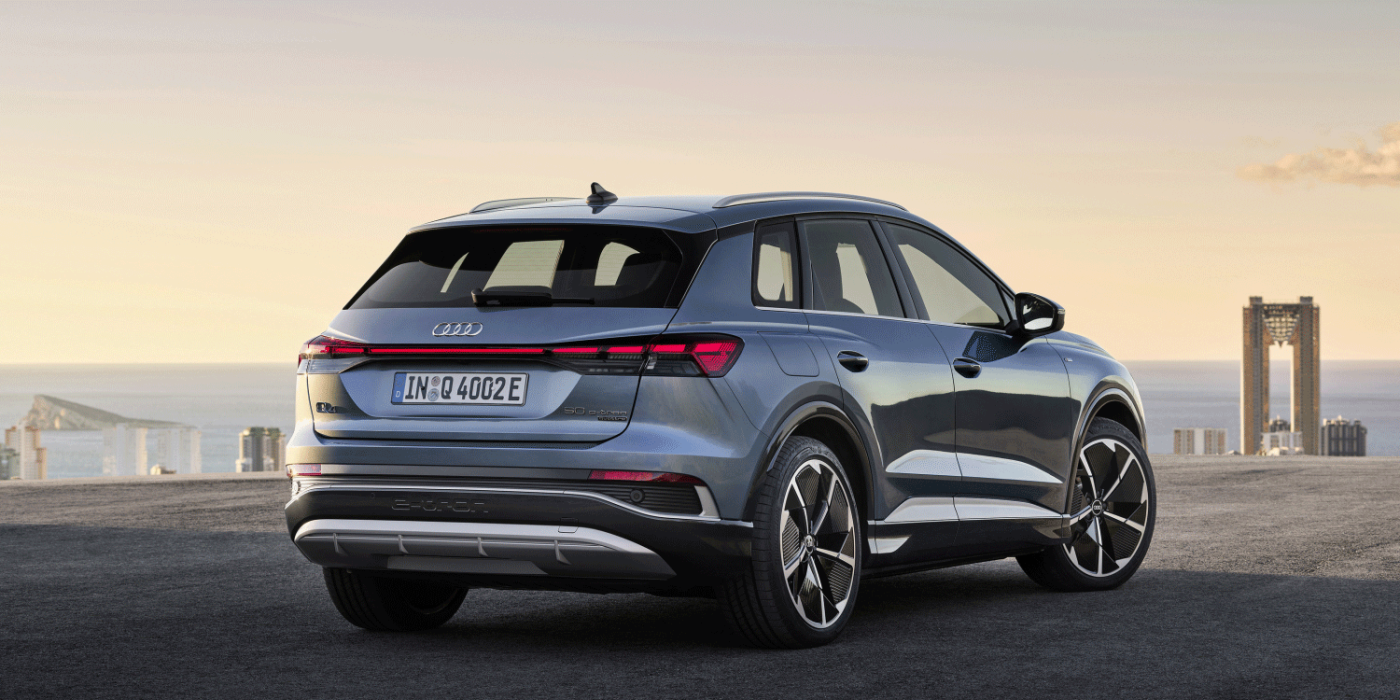
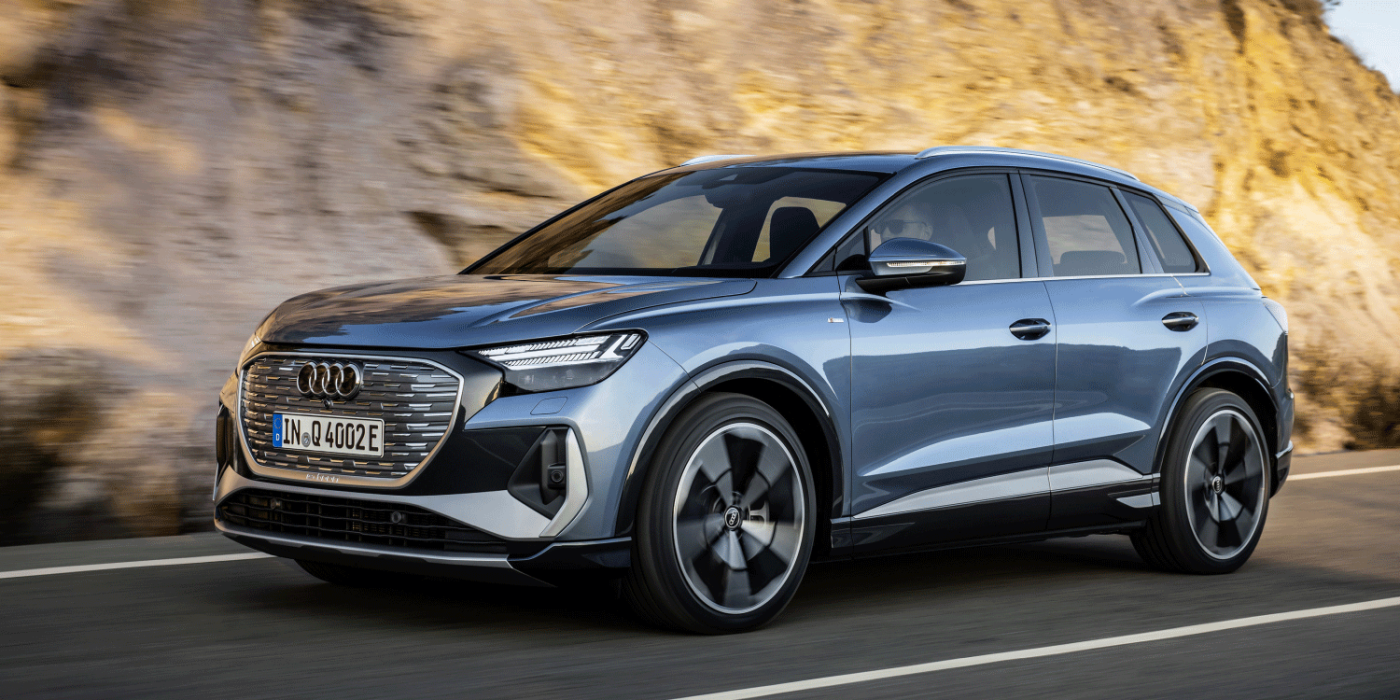
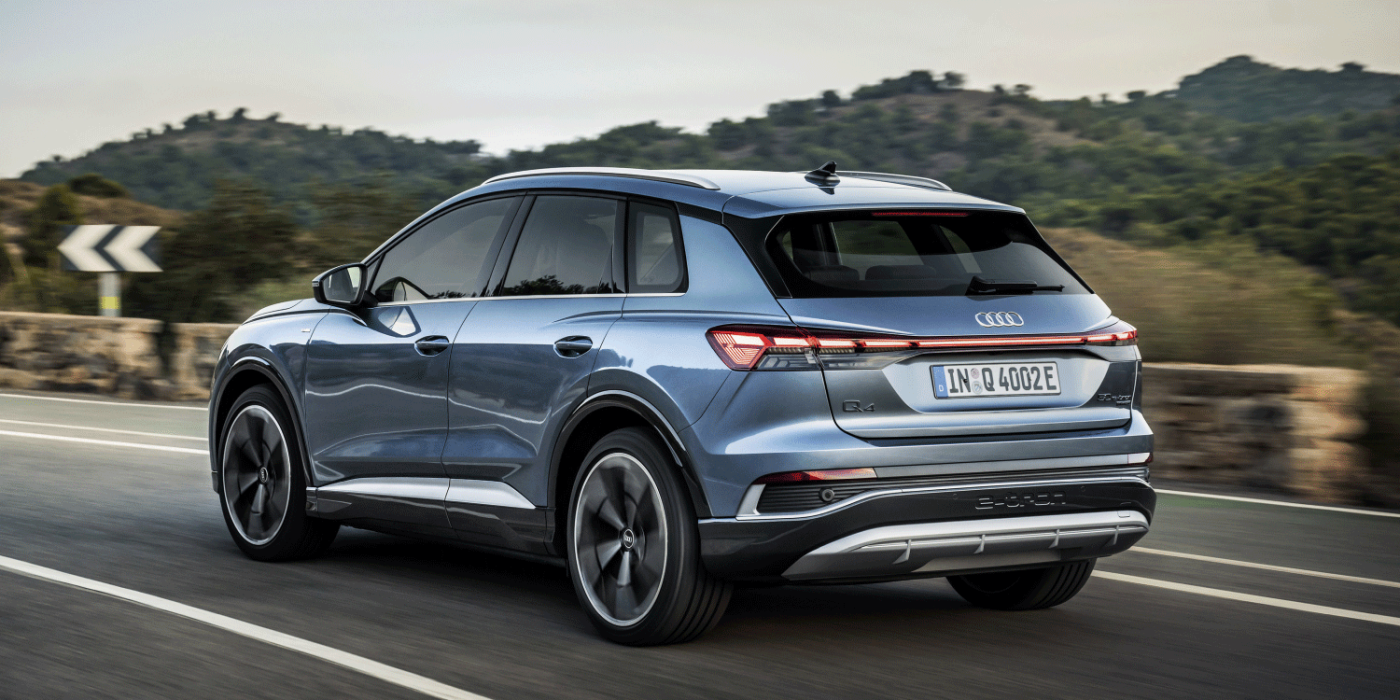
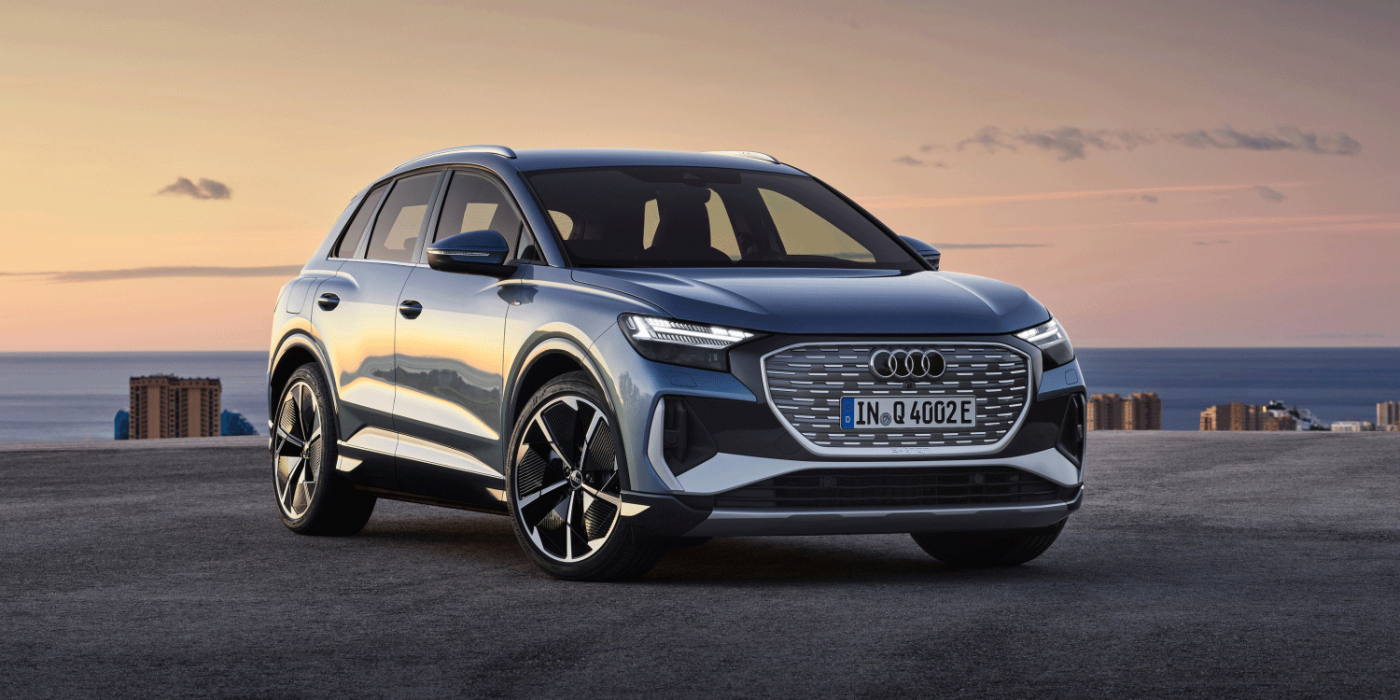
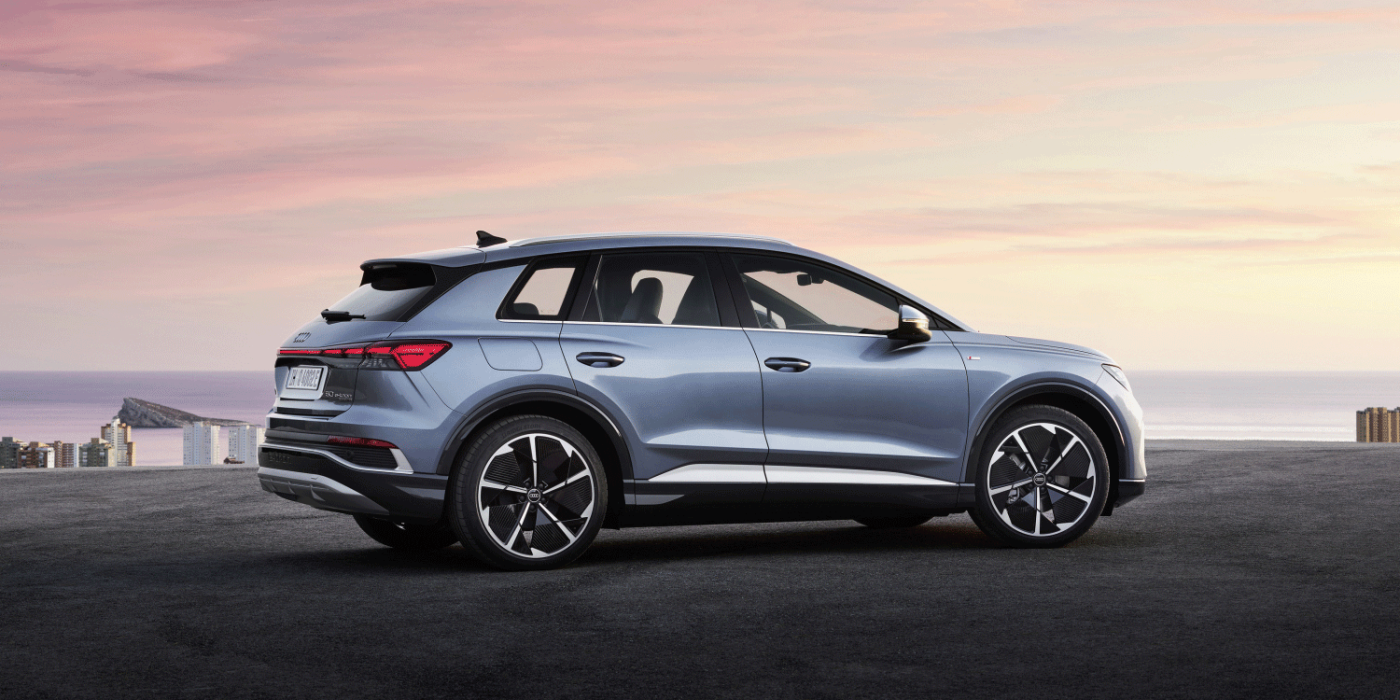
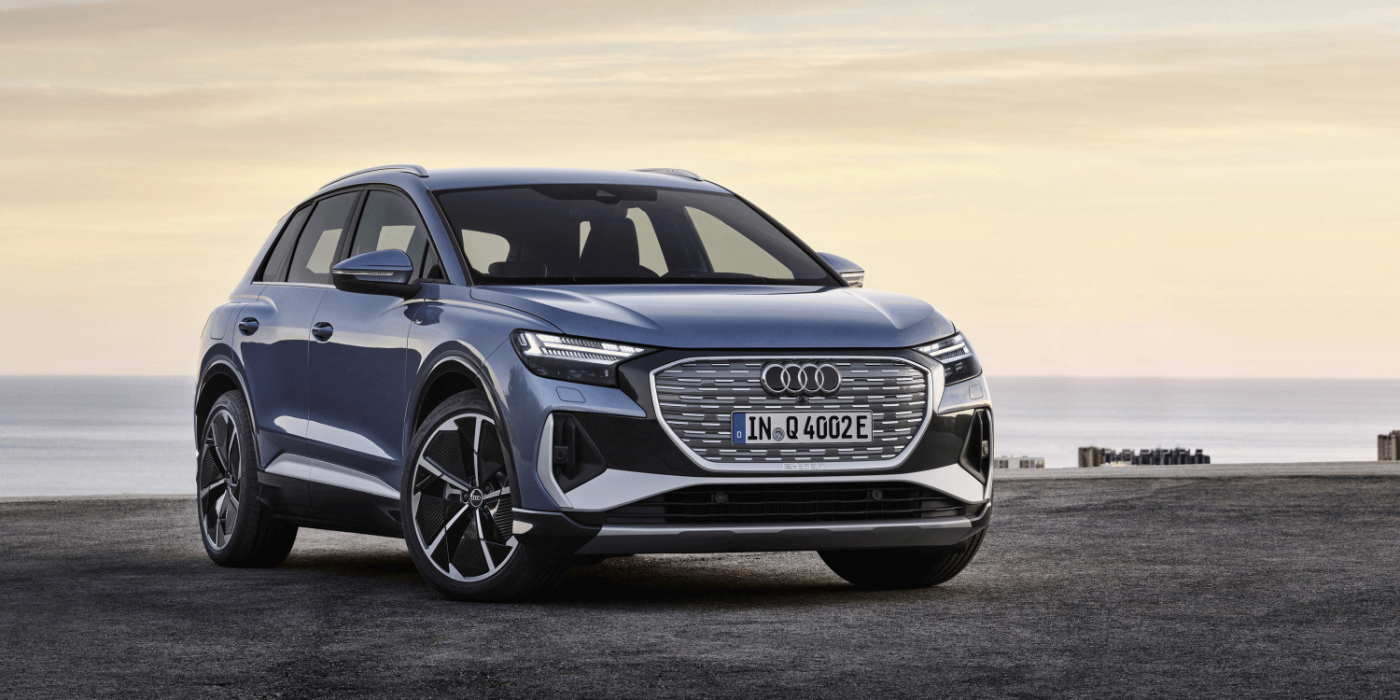
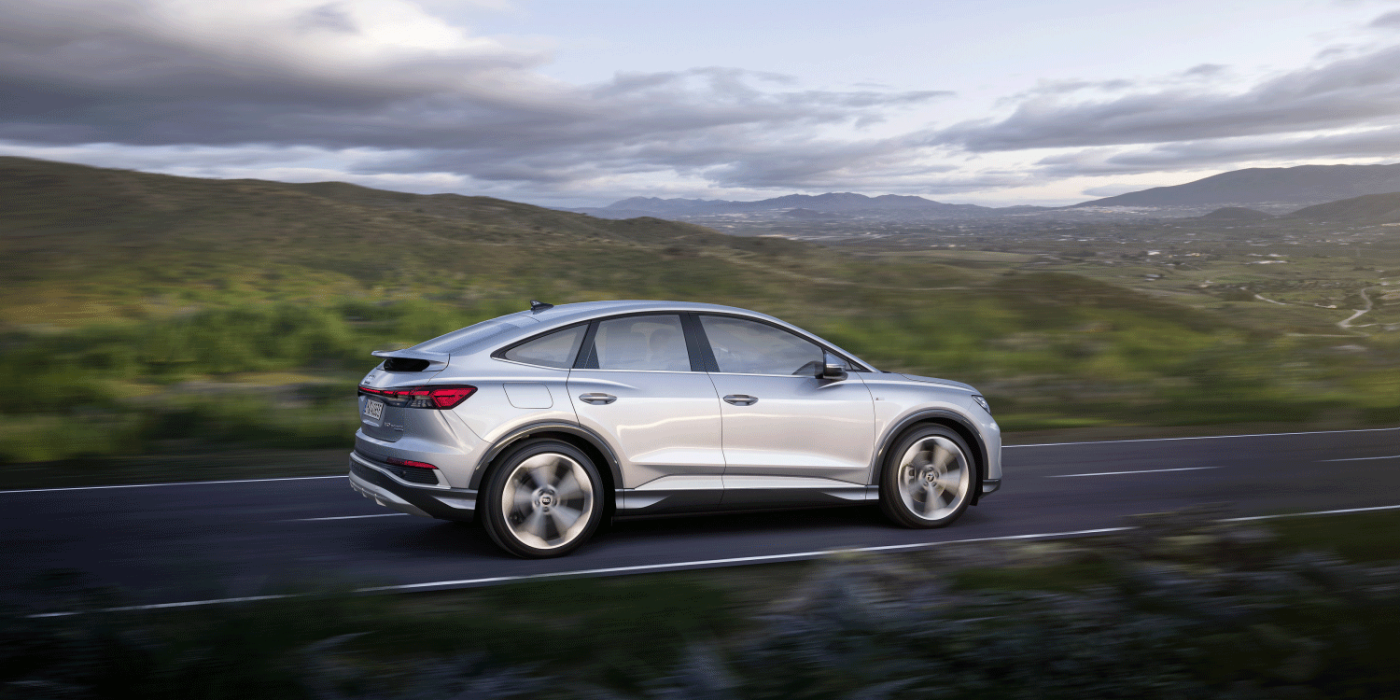
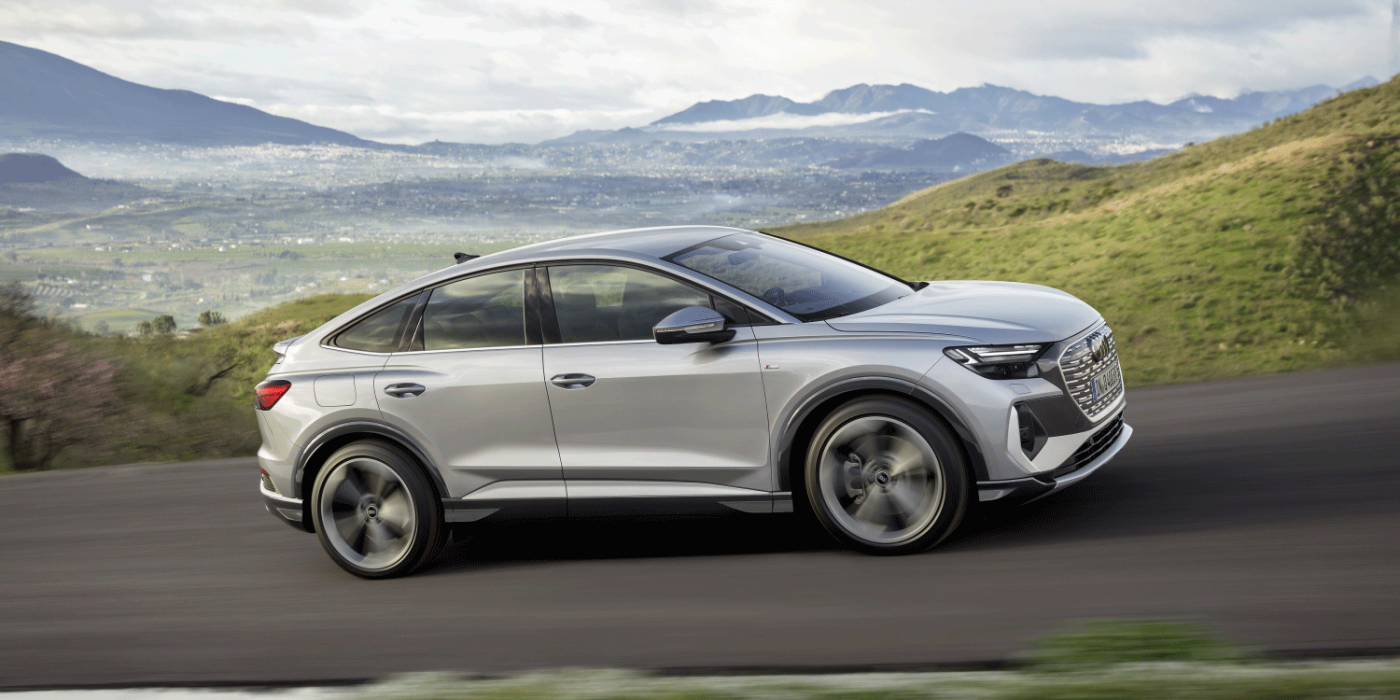
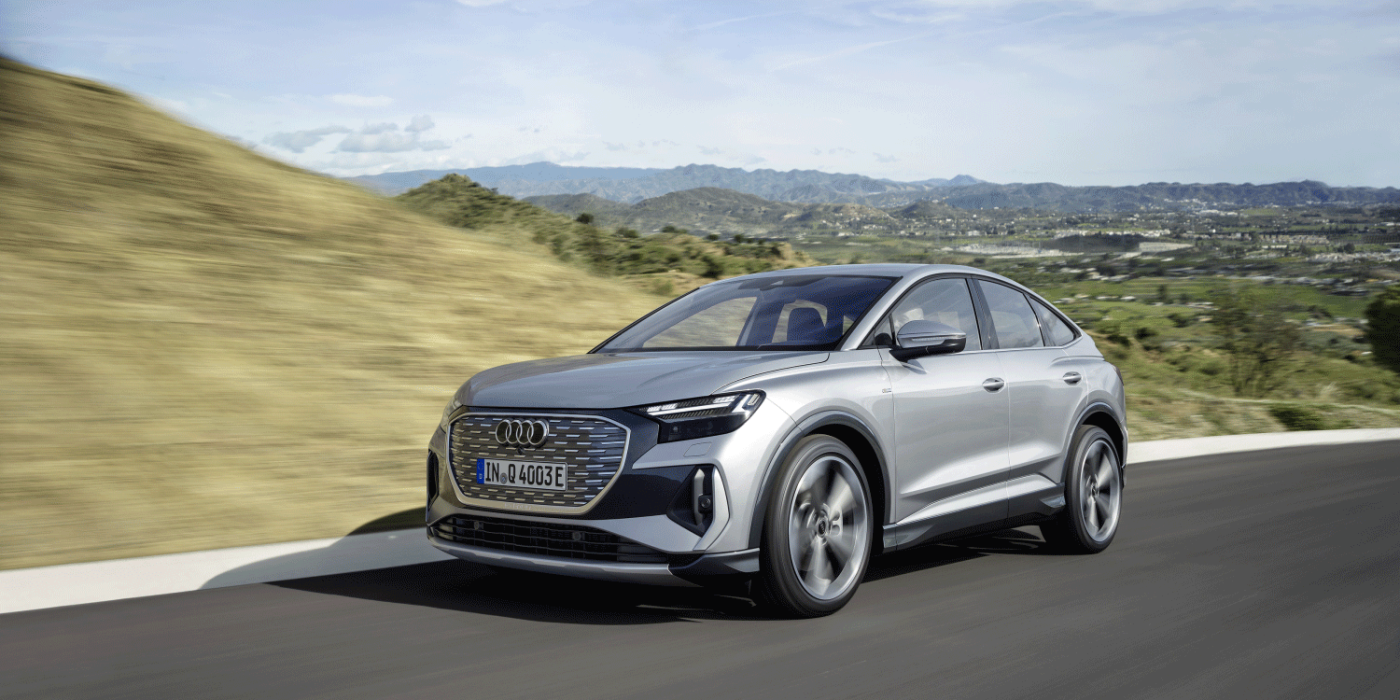
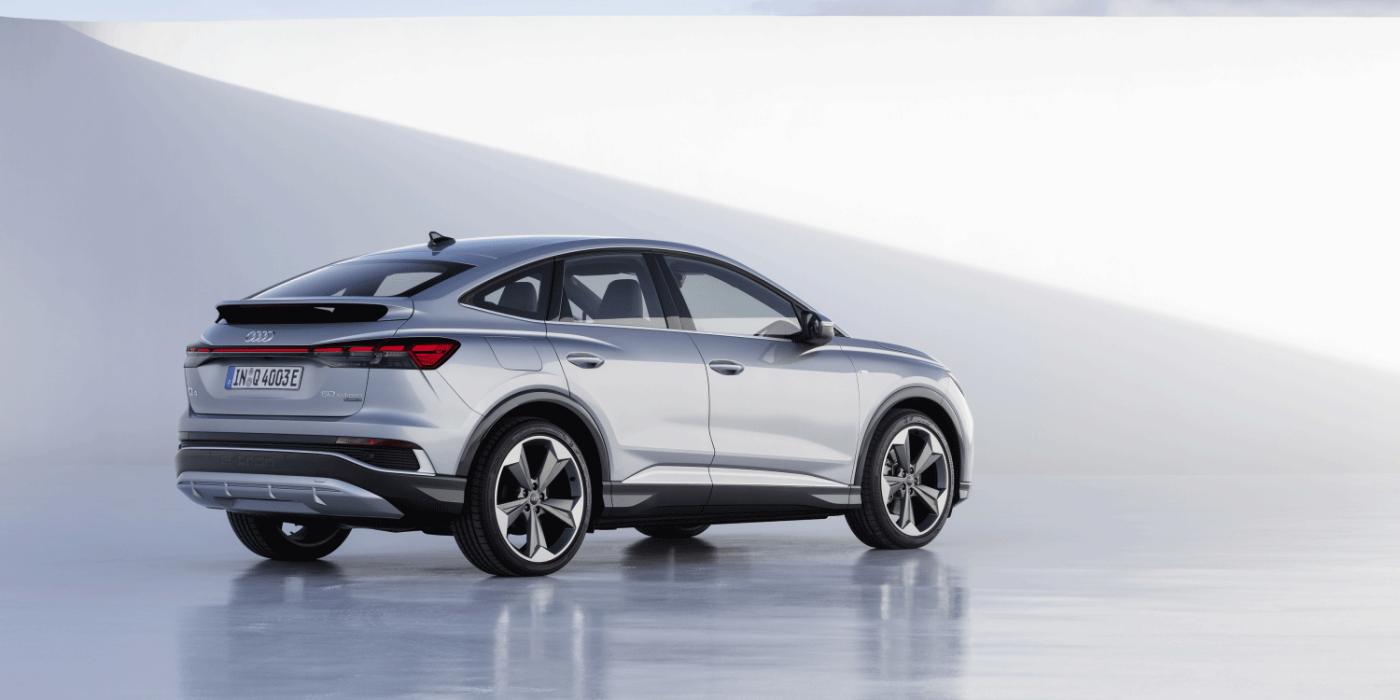
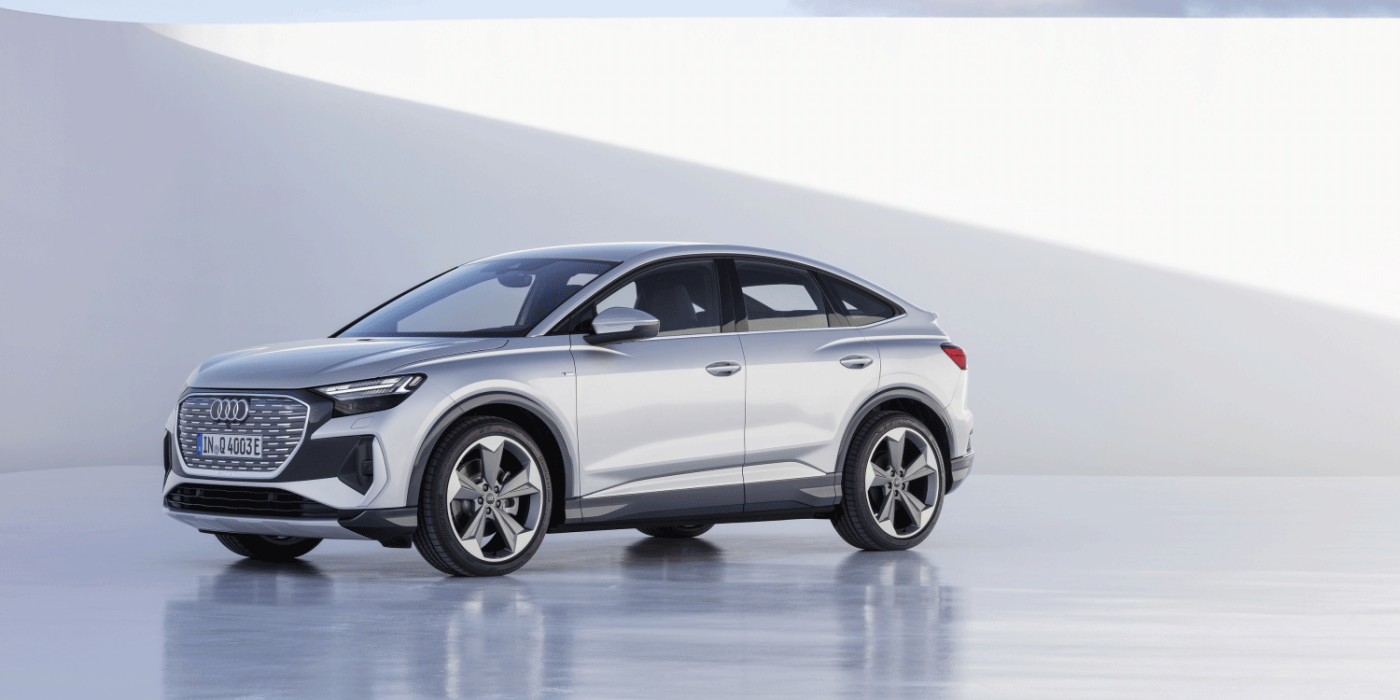
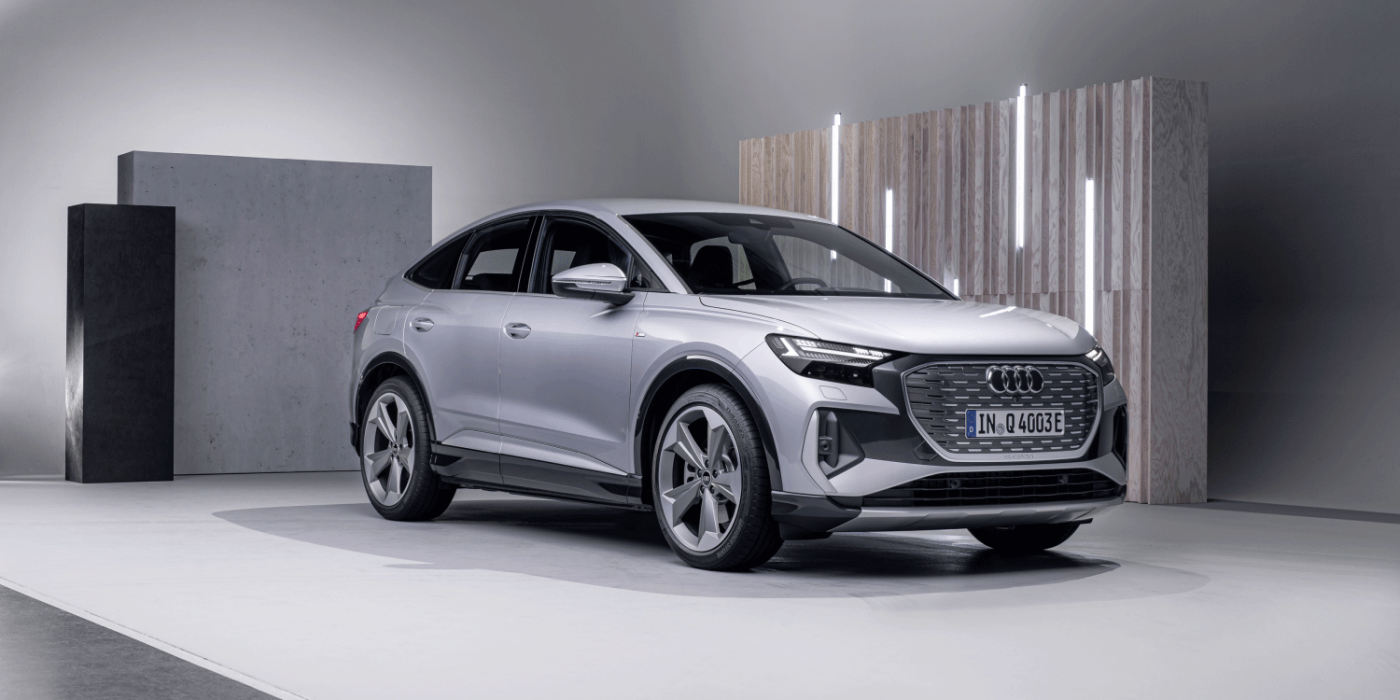
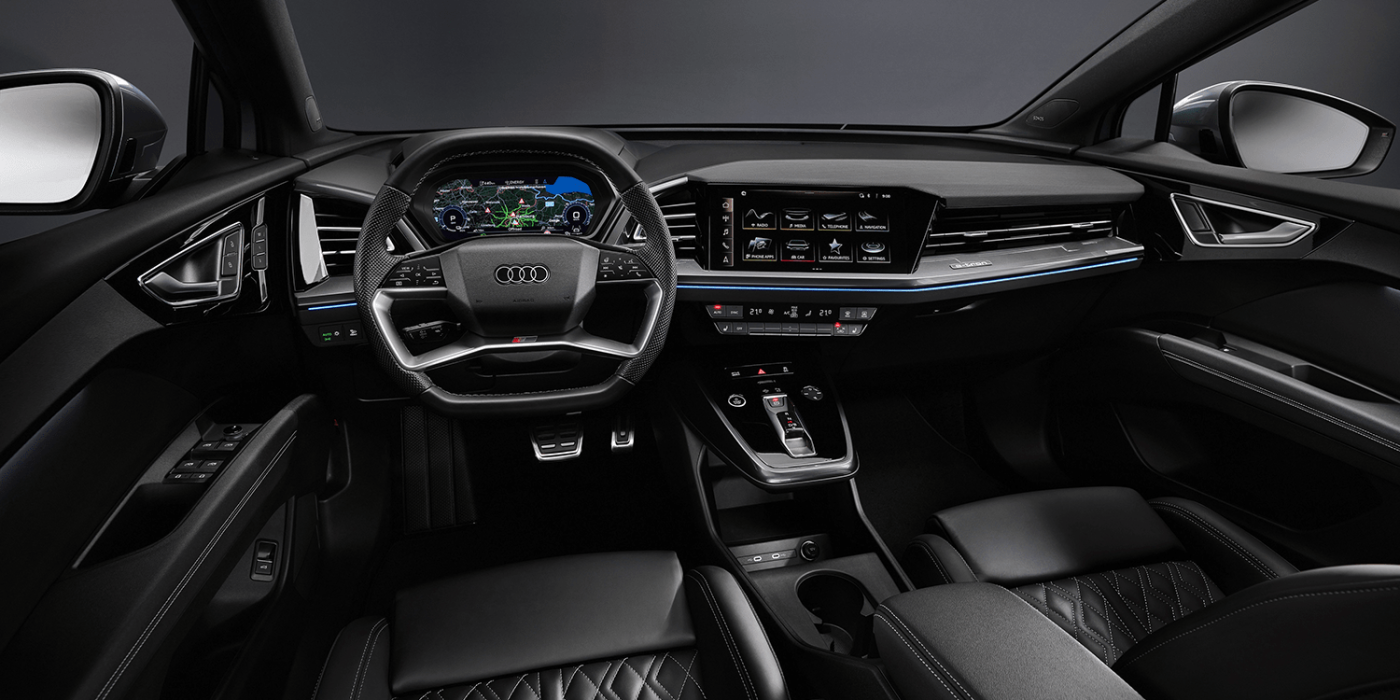
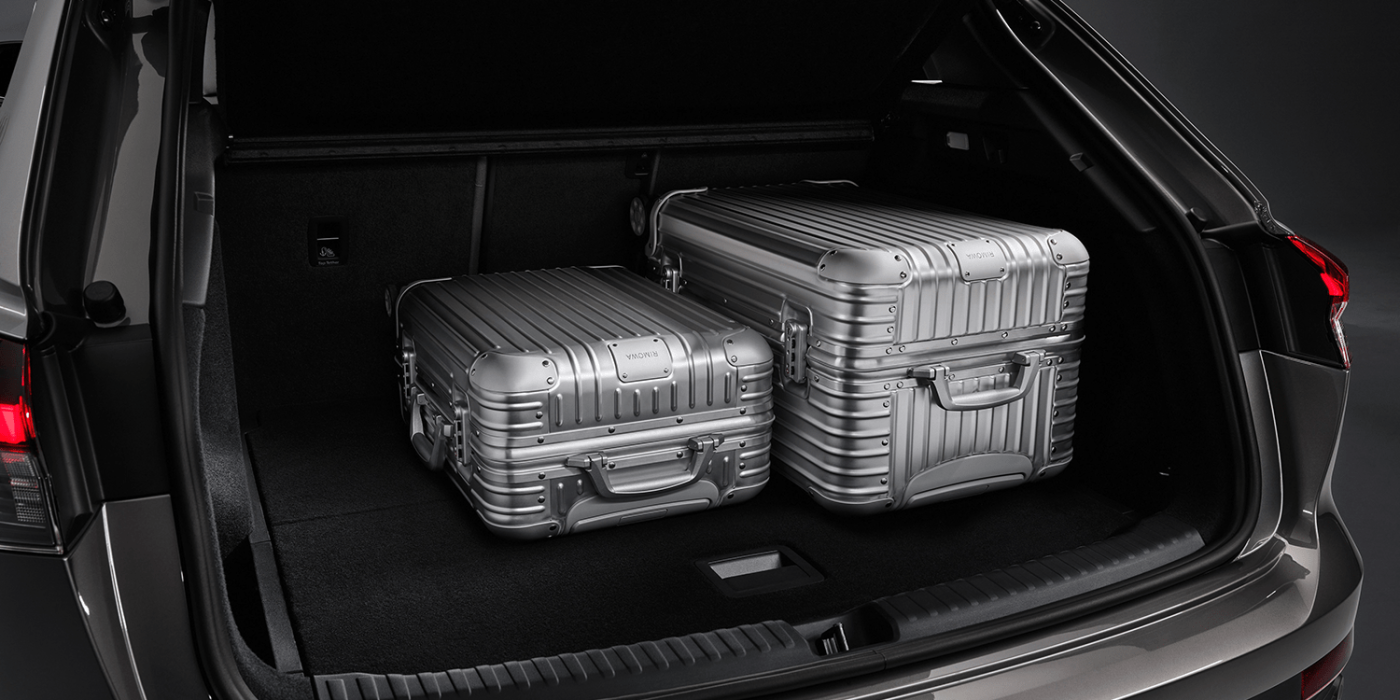
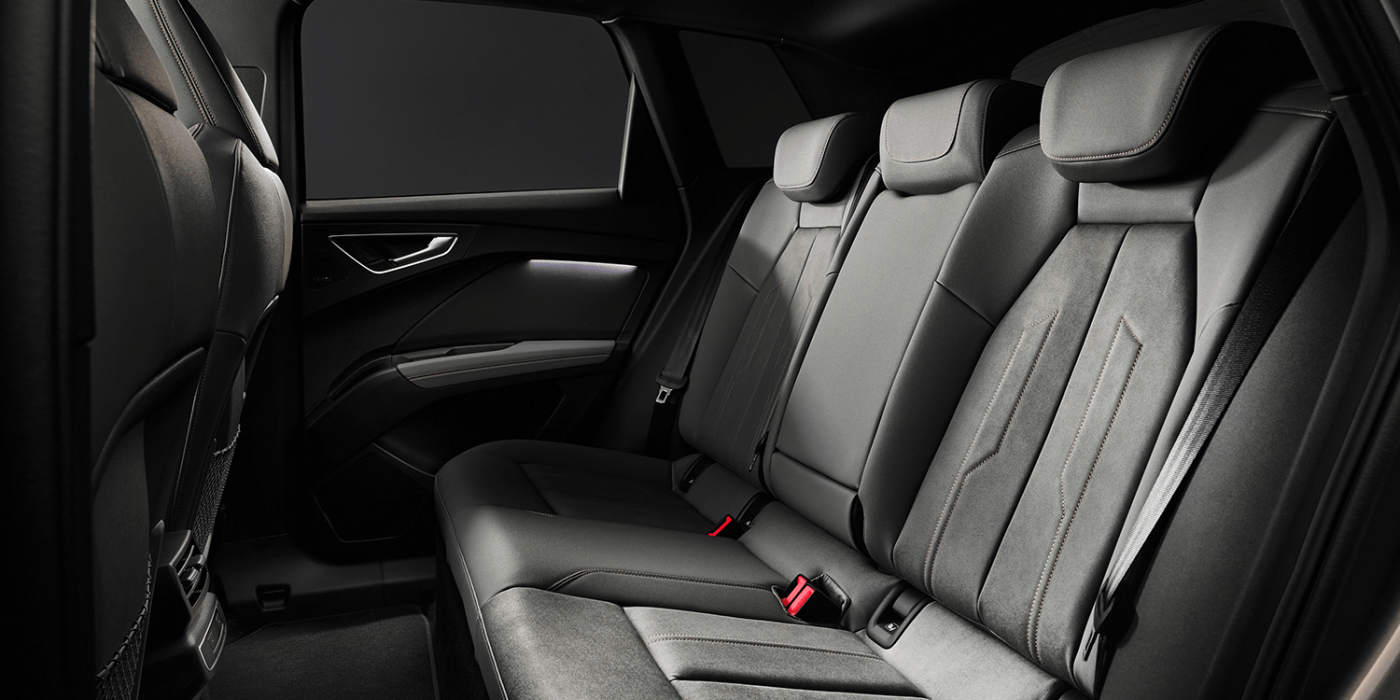
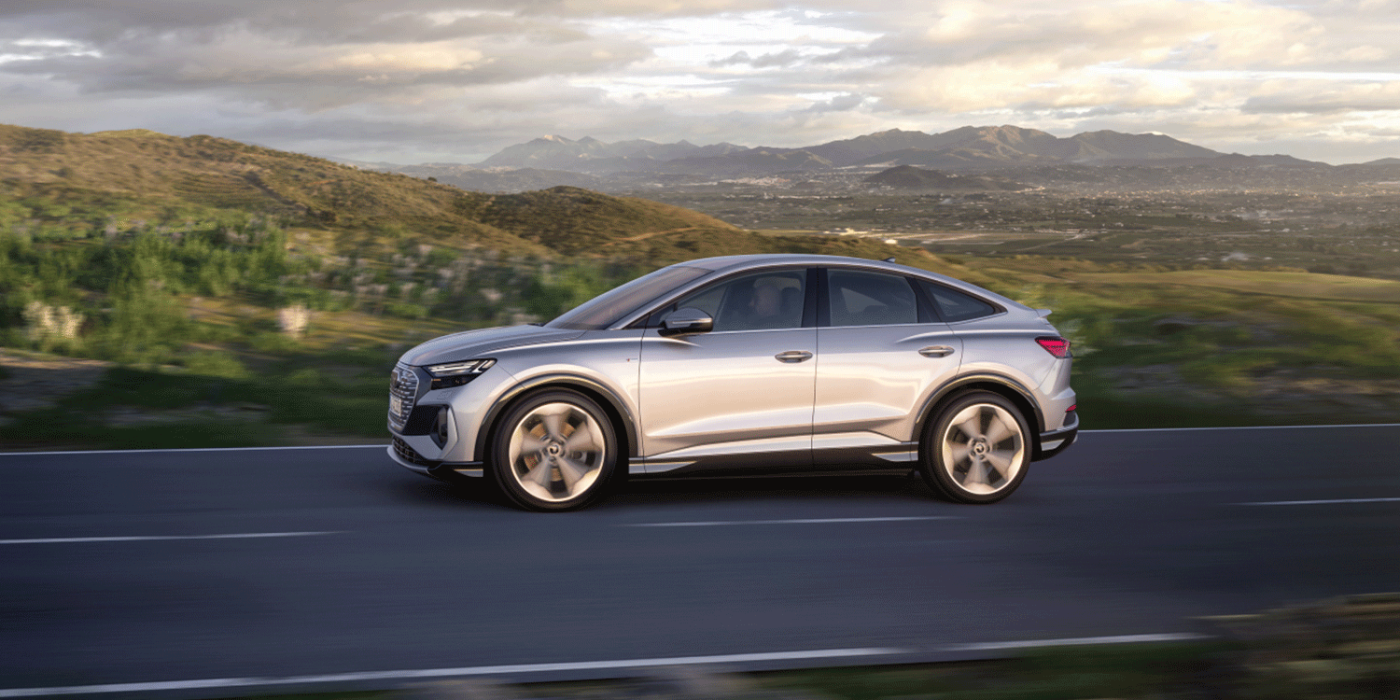
The range here is 341 kilometres (Sportback: 349 kilometres) according to WLTP. The AC charging power is 7.4 kW two-phase; it seems Audi will not offer the optional three-phase 11 kW charger of the ID.4 for the time being. “The small battery is capable of being fully charged overnight or for a working day even at 7.2 kW,” says Michael Kraus from Audi Development. “It is technically possible, but not currently planned. We’ll see what customer requests bring.”
For drivers who cannot charge at home or work and have to rely on public charging infrastructure could still at least want the option: With a four-hour charging process (for example, until the blocking charge at EnBW), that makes more than 14 kWh difference, or in practice probably around 80 kilometres of range. Nevertheless, the DC charging power of 100 kW is standard for Audi, while Skoda charges an extra 500 euros for the Enyaq iV, where only 50 kW is available ex-works.
DC charging capacity could be increased with an update.
The second variant, the Q4 40 e-tron, uses the familiar 77 kWh battery (net, gross: 82 kWh), with an electric motor output of 150 kW. Audi gives a range of 520 kilometres (Sportback: 528 kilometres), but these are still provisional figures. With the large battery, the Q4 is equipped with an 11 kW charger ex-works and up to 125 kW at a DC charging station. However, Kraus holds out the prospect of improvements via a software update but does not go into detail on a timeframe or possible range for the charging power after the update.
The top model is the Q4 50 e-tron quattro that combines the 77 kWh battery with two electric motors. However, the electric motor (ASM) on the front axle is not as powerful as the 150-kW motor (PSM) in the rear, and the system output is 220 kW. “The Quattro is part of Audi,” says the new Board Member for Development Oliver Hoffmann. In this version, the Q4 can accelerate to 100 km/h in 6.2 seconds. Audi gives the provisional range as 488 kilometres (Sportback: 497 kilometres).
As with other MEB models, the Q4 has drum brakes on the rear axle. Kraus emphasises that this is not a disadvantage for the customer – rather the opposite. “Recuperation covers 90 per cent of the braking processes. For the remaining ten per cent, the disc brakes at the front do most of the work,” says Kraus. “In our use case, the drum brakes in the rear have advantages because corrosion and maintenance costs are lower.”
The rear-wheel-drive models’ towing capacity is 1,000 kilograms, while the Q4 quattro can tow 1,200 kilograms. The load capacity is 75 kilograms each, which, according to Kraus, allows up to three e-bikes to be transported with a wheel carrier mounted on the trailer coupling.
All in all, the Ingolstadt company claims to have emphasized practicality when developing the MEB model. The car, which is “absolutely suitable for everyday use” (quote Duesmann), benefits from the electric platform’s flat interior floor. “With a dedicated electric modular system, we are enabling a new layout of space,” says Hoffmann, the board member responsible for development. “At 4.59 metres, the Q4 e-tron is shorter than a Q5 but offers space at luxury-class level.”
According to Audi officials, the boot is also larger than usual in the class. The e-SUV comes in at 520 to 1,490 litres, the SUV coupe at 535 to 1,460 litres. That’s decent, but not the best even among the MEB models: the Skoda Enyaq offers 585 to 1,710 litres, while the non-VW competition, the Hyundai Ioniq 5, offers 531 to 1,591 litres.
Audi wants to differentiate itself from its sister models through design, independent suspension tuning (a sports suspension with 15 millimetres lowering is optional) and numerous digital functions. But here, too, the Q4 adopts some components from the MEB, such as the augmented reality head-up display. On the other hand, Audi-exclusive is the premium sound system, which for the first time comes from Sonos.
Audi also makes sure it points out the customisable daytime running lights as a novelty and a “real USP”: In the control system, users can choose between four light graphics. Speaking of the operating system: Audi relies on its own MMI system here, and all app connections also run via Audi’s own backend.
Overall, Audi seems to be caught a little between worlds with the Q4 e-tron: On the one hand, the Ingolstadt-based company benefits greatly from the MEB (especially in terms of costs), but on the other hand, the distinctions in terms of technology are even more subtle than in the combustion models based on the MQB. Audi has to emphasise details such as the selectable daytime running lights, newly designed and aerodynamically optimised exterior mirrors, the tear-off edge of which is supposed to provide a range of two kilometres (the closing cooling grille at the front still provides six kilometres). By the way, the cW value of the Q4 e-tron is 0.28, the same as the Q4 Sportback e-tron 0.26.
In Germany, body variants are scheduled to go on sale in June, with prices starting at 41,900 euros for the 125 kW model before government subsidies. Prices for the 150 kW model start at 47,500 euros. The all-wheel-drive model starts at 52,900 euros. The Sportback is around 2,000 euros more expensive in each case. There will be two edition models available in both body styles and with all powertrains at market launch.
The price policy has also changed for Q4 and is supposed to be simpler. For example, instead of selecting all assistance systems individually, the Q4 will only offer three assistance packages and one comprehensive safety package. By the standards of a German premium manufacturer, this is simple; even four packages are too many for other manufacturers. The surcharges themselves for the optional heat pump or the adaptive suspension have not yet been revealed.
Update 13 July 2021
Audi’s new Q4 e-tron and Q4 Sportback e-tron are now on sale in the UK, priced from £40,750 and £42,250 respectively.
The cars come with a choice of two battery sizes, three power outputs and four trim levels, offering a maximum range of 316 miles from a single charge. The starting price will buy you a 55 kWh battery with 52 kWh of usable capacity, as well as the entry-level 35 e-tron powertrain. That produces 168 bhp, all of which is powered via the rear wheels. This setup allows for 208 miles range, while the 0-62 mph sprint takes nine seconds flat.
The more powerful 40 e-tron powertrain features an 82 kWh battery (of which 77 kWh is usable) and a 201 bhp electric motor, making for a range of 316 miles. The more powerful will get you from 0-62 mph in 8.5 seconds, although the top speed is still limited to 99 mph.
Finally, the line-topping 50 e-tron Quattro system has two electric motors providing 295 bhp and four-wheel drive. This variant hasn’t been fully economy tested yet, but Audi estimates a range of around 295 miles. The performance figures have been confirmed, though, with the 50 e-tron Quattro managing 0-62 mph in 6.2 seconds.
Update 22 September 2021
Audi’s Q4 e-tron models are ready for configuration in the US. The Q4 40 e-tron will start at $43,900, excluding a $1,095 destination fee. The Q4 50 e-tron will start at $49,900 ($50,995 including destination fee), while the Q4 Sportback 50 e-tron will start at $52,700 ($53,795). Both of the vehicles are eligible for the US federal tax credit of up to $7,500.
The Q4 50 and Q4 50 Sportback both feature a twin-motor setup capable of reaching 219 kW and 459 Nm torque, which allows for acceleration to 60 mph in 5.8 seconds. Both models are estimated to have a range of 241 miles, however Audi has not yet received its official rating from the EPA.
Reporting by Sebastian Schaal, Germany
audi-mediacenter.com (in German), insideevs.com (update), fleetworld.co.uk (update), carscoops.com, electrek.co, audiusa.com (update II)

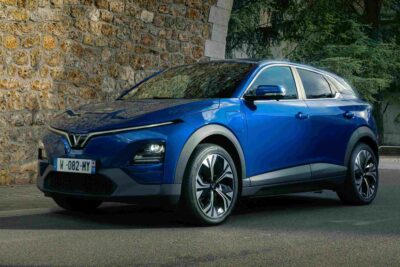
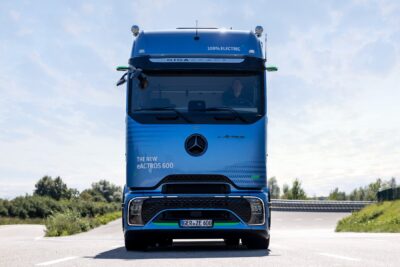
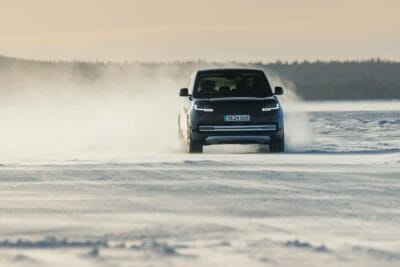
3 Comments